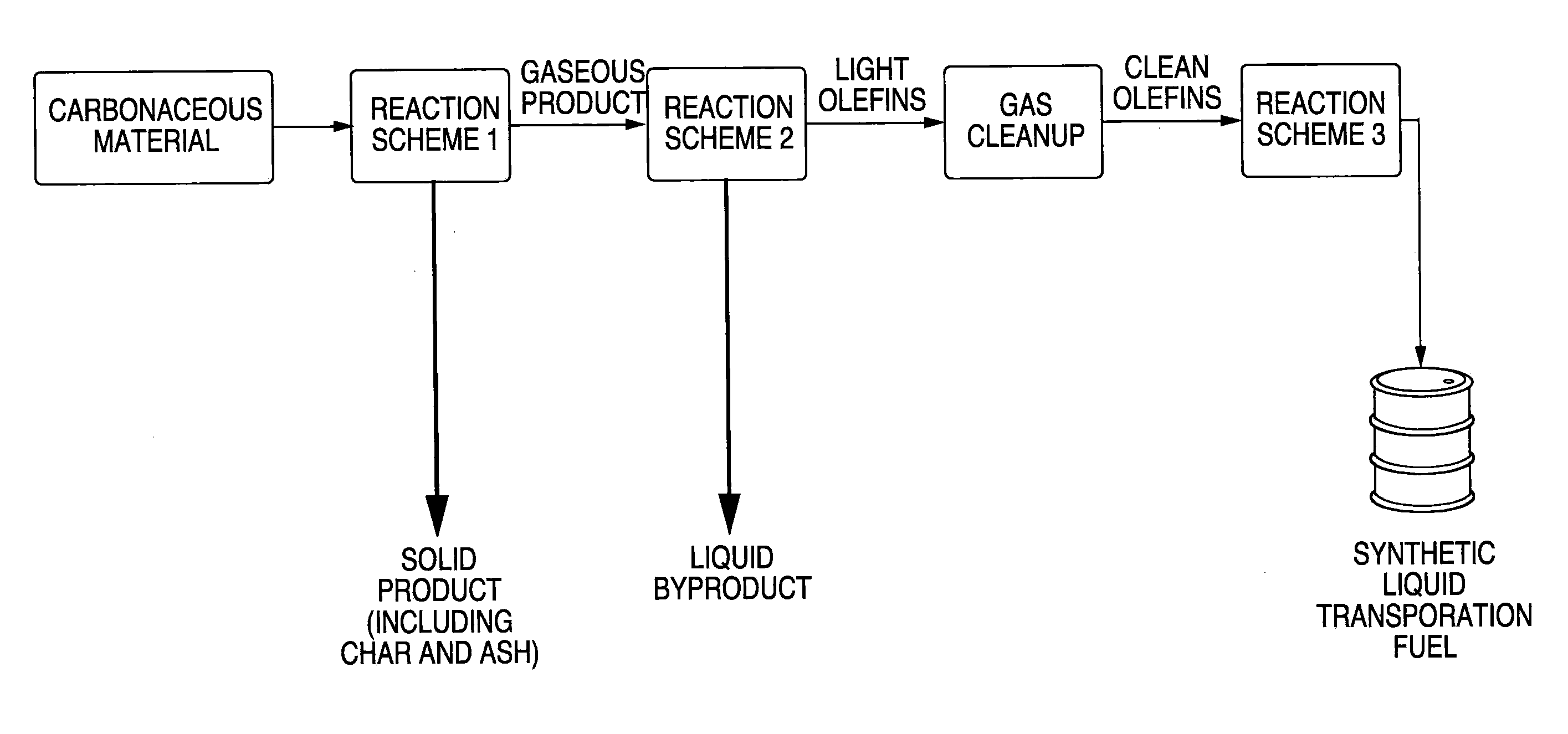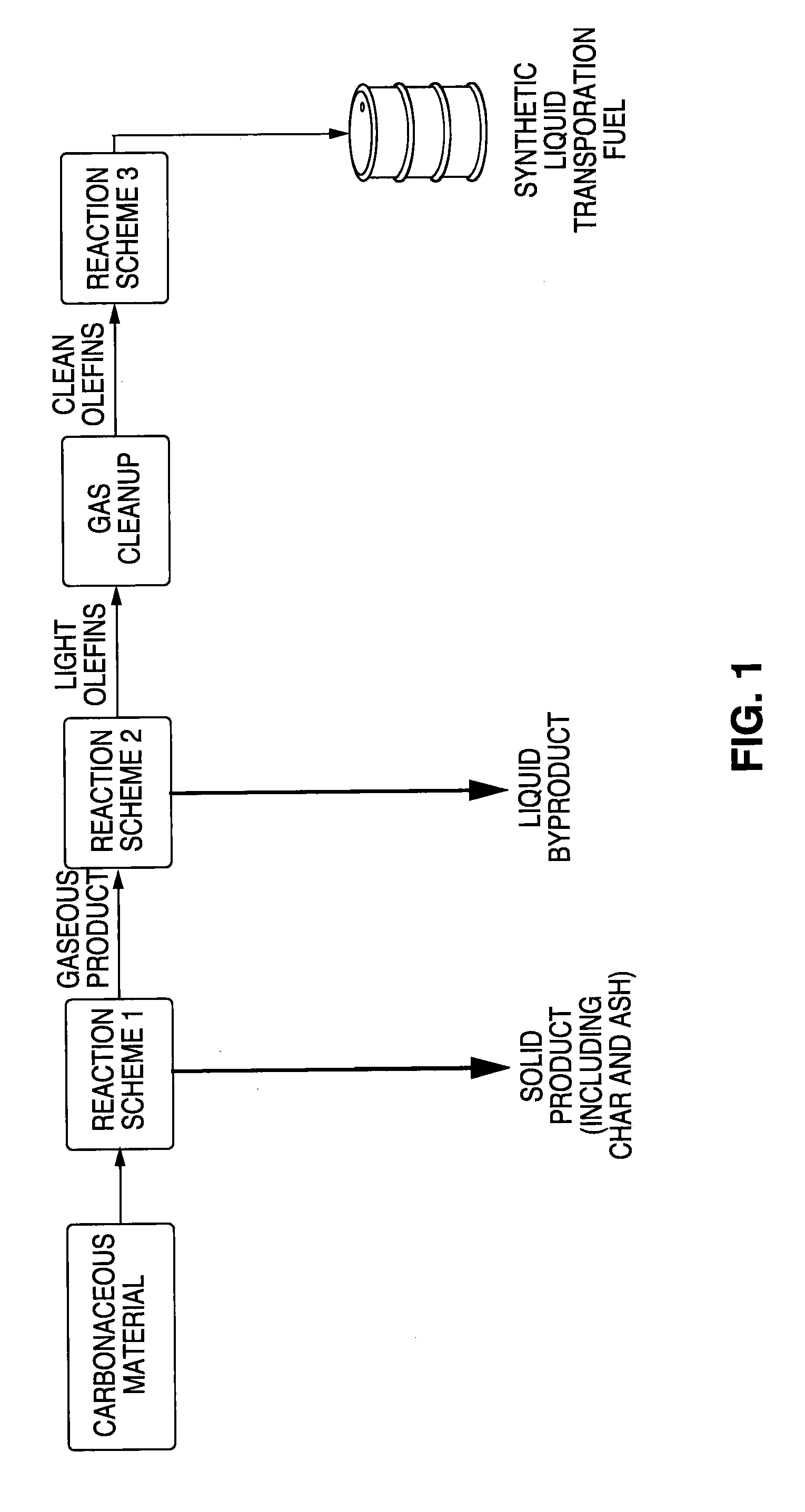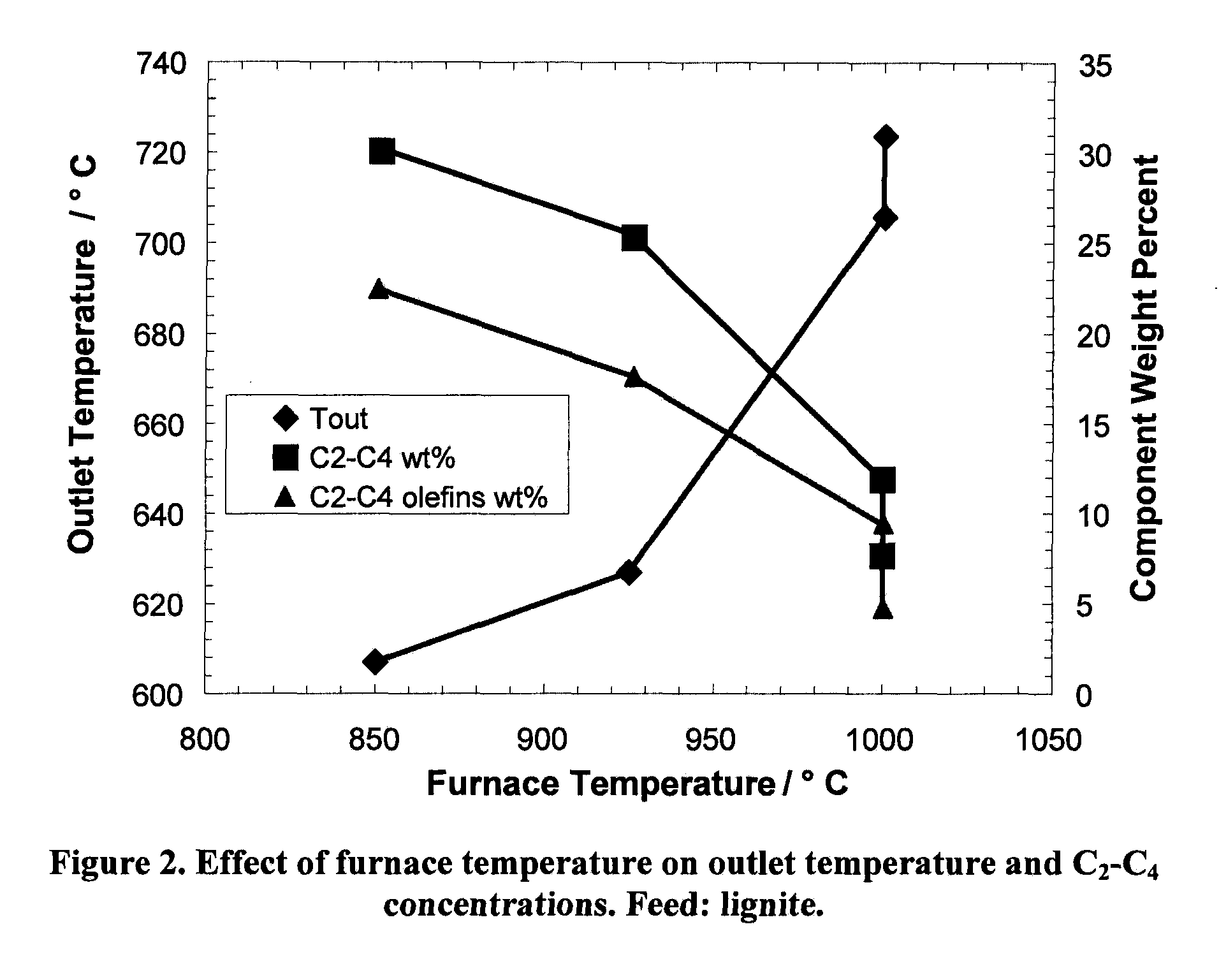Method and apparatus for conversion of carbonaceous materials to liquid fuel
a technology of carbonaceous materials and liquid fuel, which is applied in the direction of hydrocarbon oil treatment products, fuels, thermal non-catalytic cracking, etc., can solve the problems of high acidity, high temperature and pressure, and high temperature of storage of pyrolysis oil, so as to reduce cost, improve the efficiency of production, and effectively normalize the volatile gas feed
- Summary
- Abstract
- Description
- Claims
- Application Information
AI Technical Summary
Benefits of technology
Problems solved by technology
Method used
Image
Examples
example 1
Laboratory Tests of the Process with Lignite and Subbituminous Coal
[0047]One type of carbonaceous material that can be utilized as the feedstock for process embodiments of the invention is coal. Coal refers to a broad range of materials classified by rank, which is, in general, an indication of the geological age of the material. Of particular interest is the use of low-rank coal such as lignite and sub-bituminous coal. Importantly, these materials contain a considerable amount of oxygen. This oxygen can be in the form of water or it can be incorporated into the chemical structure of the coal.
[0048]An experimental apparatus that integrated first and second reaction schemes, in this example a pyrolyzer and a cracking furnace, was used to test an embodiment of the invention with lignite and subbituminous coal. The first two reaction schemes were integrated as this arrangement avoids condensation and re-vaporization of the condensable gases, from the first reaction scheme. The pyrolyze...
example 2
Laboratory Tests of the Process with Ligno-Cellulosic Biomass
[0057]The production of gasoline from ligno-cellulosic biomass was tested using a proprietary catalyst developed by and available for license from Pennsylvania State University. The results demonstrated that production of olefins from lingo-cellulosic biomass is feasible and that a liquid product similar to gasoline can be obtained through oligomerization. FIG. 6 illustrates that the variation in the C2-C4 compounds with the temperature of the second reaction scheme and for various carbonaceous starting materials. Increasing the reaction temperature of the second reaction scheme generally results in a reduction in the C2-C4 compounds, which is consistent with the results in Example 1 (c.f. FIG. 3 and FIG. 4). It should be noted that by changing the catalyst or reactor operating pressure or reactor operating temperature, liquids with different molecular weights can be produced making the process extremely flexible and able ...
PUM
| Property | Measurement | Unit |
|---|---|---|
| temperature | aaaaa | aaaaa |
| temperature | aaaaa | aaaaa |
| residence time | aaaaa | aaaaa |
Abstract
Description
Claims
Application Information
 Login to View More
Login to View More - R&D
- Intellectual Property
- Life Sciences
- Materials
- Tech Scout
- Unparalleled Data Quality
- Higher Quality Content
- 60% Fewer Hallucinations
Browse by: Latest US Patents, China's latest patents, Technical Efficacy Thesaurus, Application Domain, Technology Topic, Popular Technical Reports.
© 2025 PatSnap. All rights reserved.Legal|Privacy policy|Modern Slavery Act Transparency Statement|Sitemap|About US| Contact US: help@patsnap.com



